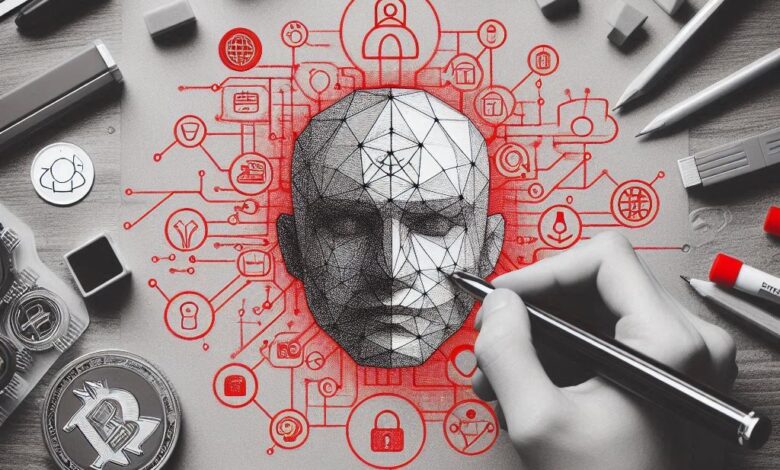
In the intricate tapestry of modern digital interactions, the need for personalisation has never been more paramount. Our preferences, shaped by unique personalities, schedules, and cultural backgrounds, are now catered to by services available around the clock across various platforms. Yet, the future of personalised interactions holds even more tremendous promise, driven by the convergence of Artificial Intelligence and Blockchain technology. This combination can transform customer and employee interactions, ensuring that personalisation is seamless, secure and transferable.
In this article, I will build out on several technological concepts, examining their history and current applications; then, I plan to extrapolate how I anticipate these technologies will be combined to revolutionise how we interact with and consume machine-delivered services, including AI, more cohesively; this is the future of individualised AI.
The Problem
With AI being seen as a panacea for everything, it is applied, rightly or wrongly, everywhere to every interaction we make, from edge devices such as mobile phones to contact centres. It is utilised to influence our shopping habits and deliver targeted marketing. These implementations are all unique and implemented as a driver of improved customer interaction.
The implementations are different, however, with the communication style sometimes being out of the box or aligned with a corporate identity. They don’t offer a standard interface to external parties. For example, every contact centre you interact with asks different questions; tones or phrases are changed, and the information you provide can be in multiple formats. If, like me, you start trawling comparison and insurance websites when your car insurance renewal is due, look for this year’s best deal. How long does it take to type in the information for one car and driver, let alone select all the extra choices associated with your request? Using this example, what if the ask took seconds using a secure token containing your insurance history and relevant information? What if this block of safe, personal data could be shared with any organisation you interact with? The time saving is evident in this one example, but how many other scenarios could benefit from this personalised data collection? At the simplest level, this is how I envisage using Blockchain technologies in the future to enhance experiences and drive productivity.
Who doesn’t love a cookie?
We already have a form of transferable personal identity, web cookies. Those tiny bits of data stored in your browser are crucial for creating personalised online experiences. They remember your preferences, login details, and settings, ensuring that your interactions with websites are smooth and tailored to your needs. They are offered as a tool for continuity and convenience. But we know they are utilised way beyond this. Web cookies are invaluable for marketing. They track browsing behaviour, enabling companies to tailor advertisements to your interests and preferences. This data can significantly enhance marketing campaigns’ relevance and effectiveness, providing users with a more engaging experience. The problem, however, is that we don’t always know what is in the cookies, and we certainly don’t know how they are being utilised.
Revolutionising Interactions with AI
The rapid development of AI has brought transformative changes to customer interactions and experiences. As highlighted above, AI-driven solutions enable companies to provide highly personalised and efficient customer service through chatbots, virtual assistants, and automated systems that can handle inquiries around the clock. The impact of AI doesn’t stop at customer-facing applications; it is also revolutionising internal service desks and enhancing employee experiences. AI-powered tools streamline workflows, automate repetitive tasks, and provide instant support for employee queries, creating a more productive and satisfying work environment. As AI continues to evolve, it promises to integrate further and personalise external and internal interactions, making every engagement feel seamless and tailored to individual preferences. This seamless experience is possible in corporate environments because of the connected systems in place; extending this further using the technologies we have today becomes too complex and unreliable due to the underlying requirement for all systems to cooperate.
The future envisions AI systems that can accurately understand and predict user preferences, creating intuitive and bespoke interactions that could even go so far as to mimic your communication style and preferences in digital communications. At the Consumer Electronics Show (CES) this year, many environmental and individual AI tools were being touted to take us to the next level of AI personalisation.
Guarding Personal Data and what makes me, me!
While cookies and AI bring personalisation to the forefront, Blockchain technology can ensure such personalisation is secure and transferable.
The concept of blockchain emerged from a desire for a decentralised, secure method of recording transactions without a central authority. Blockchain is essentially a digital ledger composed of blocks, where each block contains a list of transactions. These blocks are linked in a chronological chain, making alterations virtually impossible without altering all subsequent blocks, which would require consensus from ‘the network’. This ensures the integrity and immutability of the data. One of the key features of blockchain is its ability to store personal information securely. Using sophisticated encryption techniques, blockchain ensures that data is confidential and tamper-proof. Personal information is ‘fingerprinted’ through hashing, which converts data into a unique string of characters. This hash is then stored on the blockchain, while the actual data remains secure and accessible only to authorised individuals.
Blockchain technology acts as a digital ledger where all your information is stored securely and cannot be altered or deleted. Your data is ‘fingerprinted’ through sophisticated encryption techniques—this means that while your information is locked away, it can still be securely verified for authenticity.
Imagine your data as a series of unique keys. Only you possess the master key but can grant access to specific keys as needed. For instance, when visiting a doctor, you can securely share your medical history, knowing that Blockchain ensures that only authorised personnel can access that information. In a simplified term, this is a controllable cookie on steroids and much more. By interacting with a Blockchain, an imprint is also created. Due to its nature, you may have extended access to an organisation, but it is possible to understand what was accessed in the records you made available.
Secure and Transferable Personalisation
Hopefully, armed with a good understanding of Blockchain, you can now look to the future and how I envision a world where every digital service interaction will feel like you are speaking to your personal advisor, regardless of the organisation you’re dealing with.
These interactions with AI and human interactions will enable the maintenance of a consistent identity, appearance, and language across all platforms. This is not a personal assistant handling your calls, but a transferable identity securely linked to you through Blockchain.
This personalisation isn’t just for customer experience interaction; your communication styles, traits and nuances can be captured and utilised by the AI tools you will be consuming. We are seeing the continued adoption of AI-enabled PCs and handheld devices that will build an ‘understanding’ of your communication styles and preferences. Securely sharing this data can elevate all your future interactions as well.
Recently, I was discussing the future of AI with a company, and they have taken the stance that all employee roles will, in one way or another, be AI-enhanced within the next 5 years. Ensuring these AI solutions accurately represent the user, and corporation will become ever more critical.
I see the adoption of Blockchain as a technology that will enable this improved perception, quality of communication and experience while securely storing and sharing your data.
As a closing thought, imagine if your communicated or learnt preferences could be shared when integrating with others.
- Preferences: Your likes and dislikes, ensuring services are tailored to your needs.
- Languages: Your preferred language for communication so you always receive information in a way you understand.
- Location: To provide services relevant to your location and geographical data.
By integrating AI and Blockchain, personalisation’s future transcends individual systems’ limitations. Your data remains secure yet accessible across platforms, creating a cohesive and tailored experience. This will ensure that every interaction feels personal, respectful of your preferences, and safe, heralding a new era in digital interactions.
Conclusion
The fusion of AI and Blockchain technology paves the way for a future where personalised interactions are seamless but also secure and transferable. As these technologies evolve and integrate, they promise to revolutionise customer and employee experiences, making every engagement feel uniquely tailored and inherently safe. This is the dawn of a digital age where personalisation reaches new heights, powered by the purposeful combination of cutting-edge technologies.




